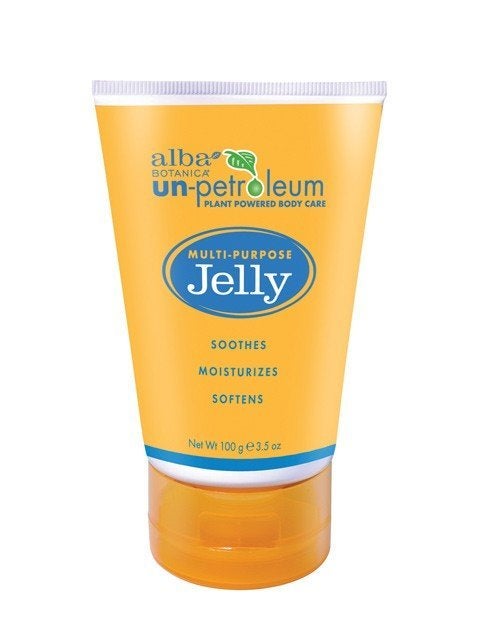
Check your average medicine cabinet, and you're bound to find a jar of Vaseline. But is your trusty petroleum jelly really a "cure-all"? More importantly, is it as harmless as you think? We enlisted New York-based dermatologist Dr. Alan Dattner, founder of HolisticDermatology.com, and celebrity makeup artist Katey Denno to help us take a closer look.
What Is Petroleum Jelly?
Petroleum jelly, commonly known by the most popular brandname Vaseline, is a derivative of oil refining. Originally found coating the bottom of oil rigs in the mid-1800s, it's a byproduct of the oil industry and therefore an unsustainable resource (read: not eco-friendly). It's commonly used topically to cure everything from dehydrated, flakey skin to diaper rash.
Why Is It Potentially Harmful?
Though generally regarded as safe, the components that are removed from the oil during the refining process of petroleum jelly are carcinogenic in some cases. "Vaseline supposedly has all of these [components] removed," Dr. Dattner says. "But there are probably plenty of petroleum jelly imitators, and one doesn't always know the extent that they're removed." Denno also points out that, since petroleum jelly can be found in "different grades of purity," you don't always know how non-toxic your petroleum jelly-based beauty products really are. (For the record, Vaseline is highly-refined, triple-purified and regarded as non-carcinogenic.)
As for your skin? According to Denno, Petroleum jelly can create the illusion of moisturized, hydrated skin, all the while suffocating your pores. It’s water-repellant and not water-soluble, meaning it merely seals the barrier so that moisture does not leave the skin. So while you might feel the instant gratification of a softened surface, you’re actually drying out your pores by keeping out air and moisture. What’s more, the thick texture makes it difficult to cleanse from the skin, so never slather Vaseline on an unwashed face if you want to avoid breakouts. “It essentially seals in the dirt,” he said. (Vaseline says on its website that its product is non-comedogenic, which means that the product does not itself block pores.)
People suffering from skin conditions like acne and rosacea should stay away from petroleum jelly altogether, since such thick emollients can aggravate those conditions. Those who rub Vaseline on dry, cracked noses to get through a cold might want to think twice, too. The product is recommended for external use only, which doesn't include nostrils. What's more, a rare but scary potential problem occurs if the petroleum jelly moves from nostrils through the respiratory system, according to Dattner. If petroleum jelly gets into the lungs, it can cause lipid pneumonia. It won’t happen if you apply it once in a while, he said, but he recommends not making a daily habit of it.
Why Do People Use It?
"It's an inexpensive way for a formulator to offer the appearance and immediate feel of hydrated skin," Denno says explaining why petroleum jelly crops up in our beauty products. As a mineral oil, it doesn't actually moisturize, but it does a good job at holding in moisture -- if you make sure to thoroughly wash and moisturize your skin before application, that is.
When you wash your skin with soap, you destroy some of the barrier and remove natural oils, so petroleum jelly can help repair that barrier if used properly, Dr. Dattner says. "It’s like putting a piece of plastic over your skin -- it prevents evaporation," he explains. But everyone is different, so it's important to see how your skin reacts to Vaseline or any other petroleum jelly-based products before committing to a regimen.
What Can You Use Instead?
Don't think you have to forfeit the soothing feeling of Vaseline if you decide to eschew petroleum jelly, though. If you're looking for a dewy moisturizer, just opt for more natural alternatives and check ingredients. Products containing beeswax, coconut oil, olive oil, shea butter and cocoa butter seal in moisture and don't come with some of the risks of petroleum jelly. "Remember that some of these products are absorbed into the skin, so it's nice to use something that you wouldn't mind putting into your body," Dr. Dattner says.
At least you have options:
CLARIFICATION: This post has been edited to reflect that Vaseline Petroleum Jelly is highly-refined, triple-purified and regarded as non-carcinogenic and non-comedogenic. This article has also been updated with additional details about the recommended usage of petroleum jelly.
